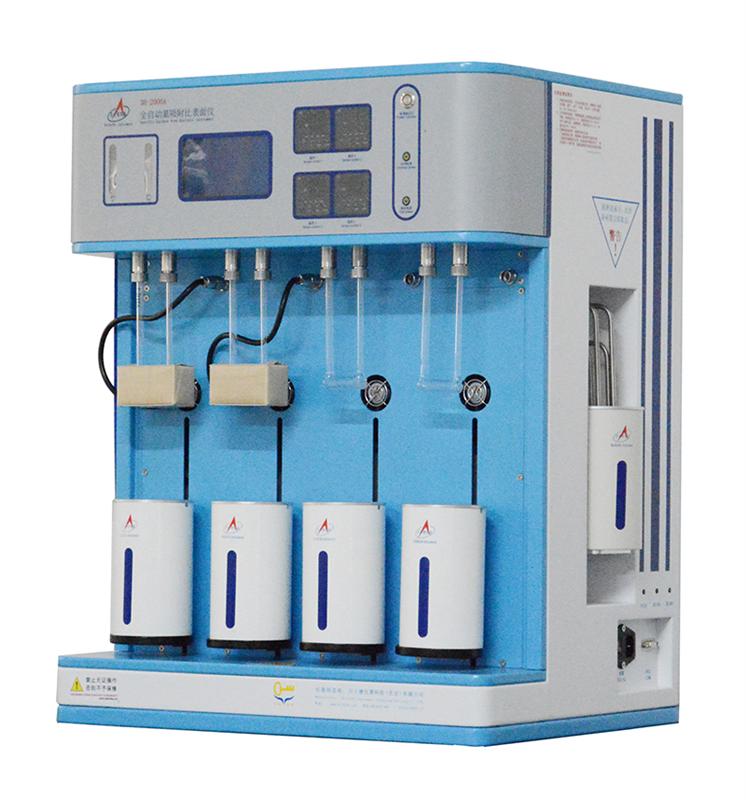For small specific surface area samples, such as battery materials, organic compounds, biological substances, metal powders, and abrasives with low porosity, the static method of testing often faces significant challenges. Due to the limited amount of gas adsorption, the results from the static method can be less accurate compared to the wind-heat assisted device and detector thermostat system. In contrast, the high-precision dynamic method is more suitable for these types of samples because it offers better accuracy and sensitivity.
The static method struggles to ensure accuracy when testing small surface area samples due to several factors. For example, consider a sample with a specific surface area of 1 m²/g. The amount of nitrogen adsorbed by 0.5 g of this sample under BET conditions is approximately 0.1 ml. However, the volume of the adsorption chamber at liquid nitrogen temperature is only about 0.03 ml, while the background volume (the remaining space in the sample tube) is around 3–5 ml. To accurately measure such a small adsorption volume, the pressure sensor must have an accuracy of at least 0.03%. However, the best imported pressure sensors currently available only offer 0.1% accuracy, and most instruments use sensors with 0.15% accuracy. This means that even with ideal conditions, the uncertainty in the adsorption measurement could reach up to 10%, making it extremely difficult to obtain reliable results.
Additionally, if the sample has a smaller surface area or lower bulk density, it becomes harder to handle and weigh precisely, further reducing the accuracy of the test. In contrast, for medium-to-large surface area samples, the static method can typically achieve an accuracy of 2% or even 1%, which is much more consistent and reliable.
To address these limitations, the dynamic method—especially when equipped with wind-heat assistance, detector thermostat, and a low-temperature cold trap—offers significant advantages. These features improve signal sharpness, reduce noise, and enhance overall measurement accuracy. For instance, in the case of a 1 m²/g sample, the peak area and background can be controlled within 2%, ensuring more precise results.
In summary:
1. For small surface area samples (below 10 m²/g), it's recommended to use a dynamic chromatography-specific surface instrument with wind-heat assistance and a detector thermostat. These systems provide higher resolution and sensitivity, making them more suitable for such applications.
2. For medium-to-large surface area samples, both dynamic and static methods are generally comparable in terms of accuracy. However, the dynamic method may offer faster analysis and lower liquid nitrogen consumption, while the static method provides more detailed BET points.
3. If the goal is to measure both surface area and pore size distribution, the static volumetric method is still the preferred choice due to its reliability and precision.

Shaanxi Xinlong Metal Electro-mechanical Co., Ltd. , https://www.cnxlalloys.com
